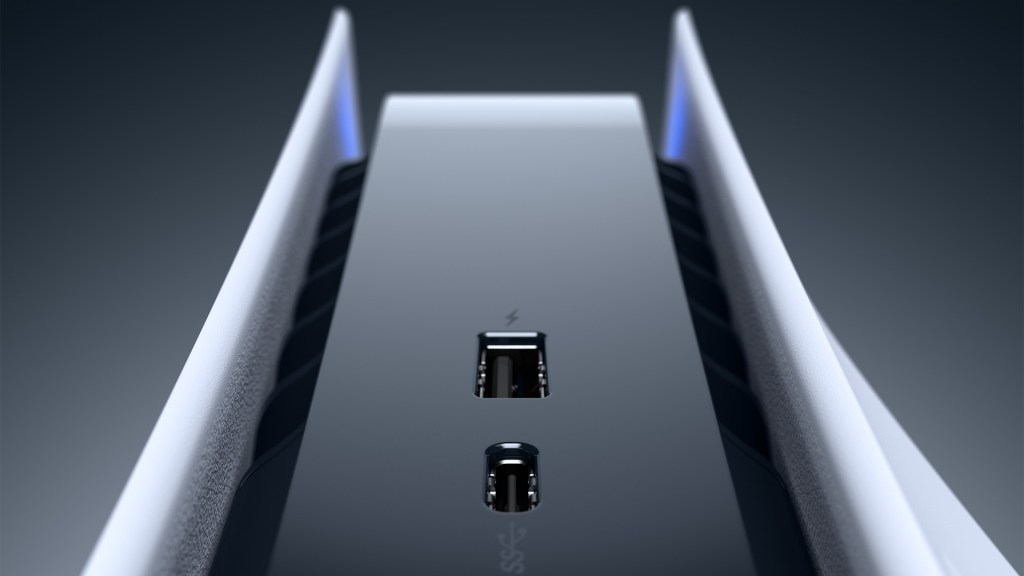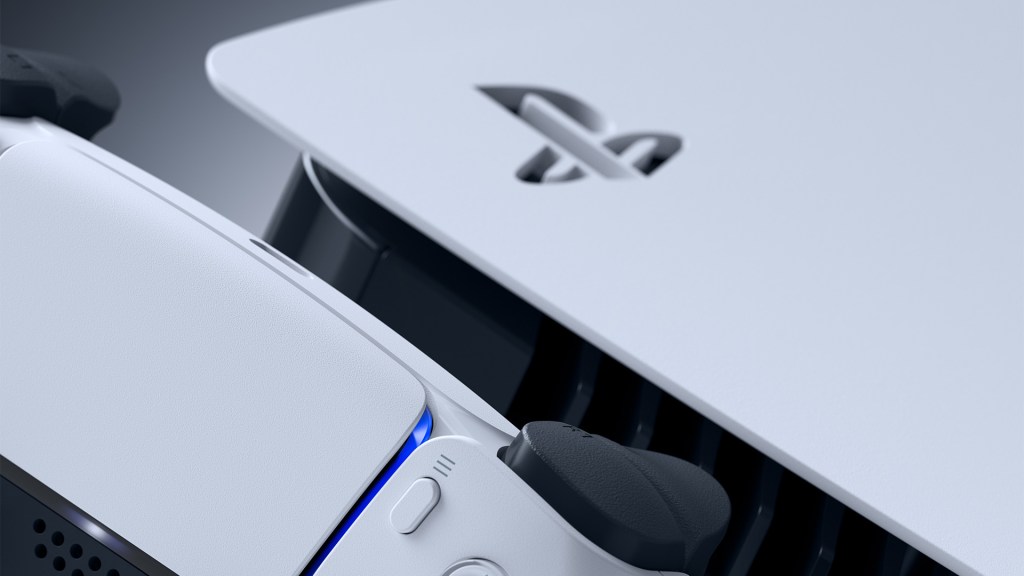PS5 Pro and Slim: everything we’ve heard about Sony’s future console upgrades
Is a mid-life hardware refresh for the PlayStation 5 on the cards?

When will the PS5 get a hardware upgrade? Well, it took three years for the PlayStation 4 to get a new version but as you’ll see, a slightly different version of the PlayStation 5 might not be that tardy to join the latest console generation.
We now know that Sony is going to launch the Playstation Portal, a PS5-dependent gaming handheld later in 2023. That means the PS5 Pro or Slim is likely to be with us in 2024 or 2025. A Slim model could see a smaller, cheaper, cooler-running PlayStation 5 based on the latest chip fabrication technology, while a beefed-up Pro version, capable of higher resolutions and frame rates, might also be on the horizon, too.
Following the launch of the PS4 in November 2013, the PlayStation 4 Slim and higher-end PlayStation 4 Pro both appeared in September 2016. The same was true of the PlayStation 3, which saw another three-year gap between its launch in 2006 and the Slim version in 2009. If Sony follows the same timetable, we could still see a PS5 Slim and/or PS5 Pro in late 2023. And, to be completist, the 2004 PS2 Slim followed the 2000 PlayStation 2 and the 2000 PSOne followed the 1994/5 original PlayStation.

Is the PS5 Slim actually just the same console with a detachable disk drive?
Recent rumours from TheLeak have suggested a redesigned PS5 is on the way – but it may not actually be called PS5 Slim. The goal will still be to reduce size and weight, though. A die shrink (smaller, more efficient version of an existing CPU) could help bring power consumption down. The tweaked chassis should also be able to stand vertically without the need for a stand.
Insider Gaming suggests that a PS5 Slim will actually be a version of the original PS5 with a detachable disk drive, meaning that the original disk version of the console would be phased out. It’s suggested this could indeed be coming in late 2023 and is a very strong possibility in our book. This would not be a replacement for the PS5 Pro, which it seems is coming at a later date.
The biggest leak to date comes via Twitter user BwE, who claims to have gotten hold of the plastic shell that will be used for an upcoming PS5 model. A large bulge at the side contains the disc drive slot, but the main unit is considerably skinnier than the regular PS5 console. The front USB ports have also been swapped from one USB-C and one USB-A to two USB-Cs.
It is implied the disc drive can be attached and removed, fuelling rumours Sony would be selling the drive separately, although this isn’t shown in the clip.
What could be different in a new PS5 version?
While it’s hard to glean any information about unannounced tech that’s in any way accurate, Sony does have various pieces of hardware in the works. We now know of the Playstation Portal handheld, as well as some PlayStation Earbuds.
One rumour, published by French website Phonandroid, quotes an anonymous source that the PS5 Pro will come with liquid cooling and possibly a new AMD APU to provide a performance boost. However, the source claimed it would be coming in just a few weeks, and that was at the end of January so that’s a dead duck.
When it comes to the PlayStation 6, we may already have an inkling on who’ll be handling its design. The latest murmurs point to long-time Sony exec Mark Cerny being at the helm of PlayStation development, which naturally includes the creation of the PS6. Cerny certainly has some experience when it comes to brainstorming PlayStations – he was lead designer of both the PS4 and PS5. As for a PS6 launch date? We’re looking at 2027 or 2028 we believe.
Anyway, back to the PlayStation 5 console, which has already seen a few changes. Firmware updates have delivered the ability to output variable refresh rate video, while at the hardware level, the August launch of the CFI-1202 model shaved 300g off the version with the Blu-ray drive. We’d expect a Slim model to reduce the weight by even more.
The current PS5’s internal chipset is said to be rather large. A die shrink from the original 7nm processors to the new 3nm fabrication technology being touted by TMSC, the company that actually makes the AMD-designed chips, could save a lot of space. Because the chips would run cooler, they could use a smaller heatsink, in turn letting Sony shrink the console. Fingers crossed any such move would also cut down on noise as well.
Previous PlayStation generations have seen dramatic physical changes between the original and slim versions. The PS4 did stay fairly true to the console on which it was based, though, so it’s a toss-up as to whether Sony will keep things similar, or go for a different design altogether.
We could maybe expect some built-in cloud gaming features, too. Sony says it has already started testing its cloud capabilities, and is testing cloud streaming for PS5 games. There are plans to add this to its PlayStation Plus Premium tier, which will allow gamers to play games without actually having to spend a day downloading them.
PS5 Pro: what do we want?

As we saw from the PlayStation 4 Pro, a mid-life upgrade is all about running the same games but making them better, offering higher resolutions and faster frame rates.
While 8K TVs are now available, the sheer processing power needed to push that many processed, lit and textured pixels probably rules it out for at least another console generation. With that in mind, a Pro version of the PS5 is more likely to concentrate on getting 4K really right. This means games that run at that resolution without dynamically dropping it when a scene becomes complicated, and a rock-solid 60fps frame rate.
The PS5’s current eight-core CPU is based on AMD’s Zen 2 architecture from 2019. A move to the current Zen 4 could see greater processing ability as well as increased power efficiency, while retaining backwards compatibility – though games might need patches to fully support the new chips. It might also force developers to relearn the PS5’s underlying architecture. A clock speed increase, like the one seen between PS4 and PS4 Pro, is more likely.
The same goes for the graphics unit, which uses AMD’s RDNA 2 from 2020. Increasing the number of compute units and upping the clock speed could have a dramatic effect on its ability to push polygons and render visual effects.
Increasing the console’s 16GB of shared memory would allow it to store more information without having to bother the SSD, which although fast, isn’t running at the same speed as the RAM. Modern PC games are starting to demand more than 16GB of memory when totalled across the main and graphics allocations, so a rise in RAM capacity isn’t out of the question – as long as developers continued to support the original hardware.
How much could the new PS5 Pro and Slim models cost?

The PlayStation 4 cost $399/£349 at launch, and was followed up by the $299/£259 PS4 Slim ($399/£309 if you went for the model with a 1TB hard disk). The PS4 Pro then turned up for $399/£349 – a competitive price, given the performance upgrade over the OG model.
When the PS5 arrived, you could spend $399/£360 on a digital-only console, or $499/£450 on one with a Blu-ray disc drive. Sony then raised those prices by around $/£50, blaming global inflation and exchange rates. Recently, however, we’ve seen the price for PS5 game bundles drop a little to around $559/£500, and this pricing volatility makes guessing the price of any Slim and Pro variants a bit tricky.
We’re betting $670-$740 or £550-600 is possible for the Pro, making it a serious investment. The PS5 Slim should fare a little better, though.
It’ll need to compete with Microsoft’s popular Xbox Series S, which is available for $299/£249. That said, Microsoft’s head of gaming Phil Spencer told CNBC that Series S consoles are sold at a loss in the hope that gamers will buy lots of games to play on it. $370/£299 is our estimate right now.
When can we expect a PS5 Pro?
We have seen some reports that suggests a PS5 Pro may hit shelves around late 2023 or 2024. That’s a long time to wait, but before that we may see a PS5 with a detachable disc drive. In a tweet from Insider Gaming owner Tom Henderson, they say that a number of test kits with disc drives are in the hands of a select few and “works flawlessly.” This overhauled PS5 is set to be released in late 2023, rumours suggest but we think it’s way more likely for 2024 or 2025.
A 2023 release date would cause chaos for sales given that Final Fantasy 16 is due soon and Spider-Man 2 will be with us later in the year. Again, we think it highly likely that any new PlayStation console won’t be with us before late 2024, something suggested elsewhere as well but we might get the PS5 with detachable disk drive we mentioned above.
In an interview between Japanese games magazine Famitsu and Sony platform experience EVP Hideaki Nishino in 2022, Famitsu noted how a PS4 Pro came three years after the release of the PS4. In response, Nishino said: “We believe that it will be a very important time for the platform as well. I hope you will look forward to next year.” Is this confirmation of a PS5 Pro for 2023? Definitely not. But is it the best we have for now? Absolutely.



